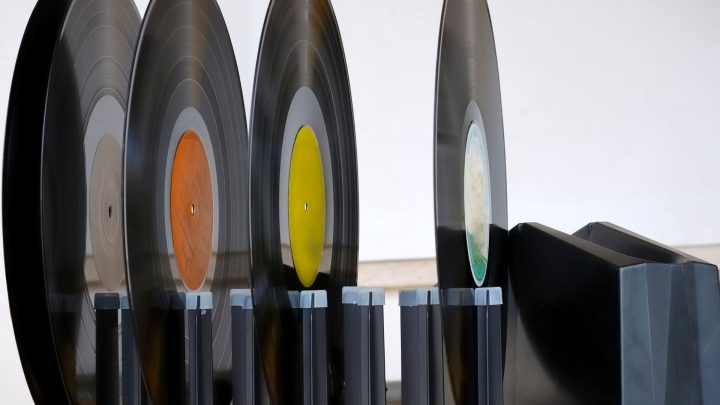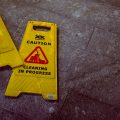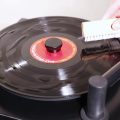Investing in an automated record cleaning machine offers superior dust removal without redistribution while lifting stubborn contaminants with no risk of abrasion. After all, manual cleaning leaves behind fine particulates and risks surface damage. Today let’s explore top-rated models’ cleaning technologies to match prospective buyers with their ideal machine. Discover how to extract pristine sound from your vinyl collection while protecting it for generations with the perfect record cleaning equipment.
Table of Contents
- Top Record Cleaning Machines
- Why Use a Record Cleaning Machine?
- Features to Consider Before Buying
- How to Use a Record Cleaning Machine
- Maintaining Your Record Cleaning Machine
- Top 5 Record Cleaning Machines Reviewed for Vinyl Lovers
- FAQs
Top Record Cleaning Machines
With so many models on the market, selecting an effective record cleaning device deserves careful consideration. After extensive research, I suggest these 5 excellent options covering manual, automatic, and ultrasonic cleaners across varied price points.
Pro-Ject VC-S2 ALU Record Cleaning Machine
The Pro-Ject VC-S2 ALU stands out for its robust build quality and efficient cleaning process. It features a powerful vacuum system that quickly and effectively removes dust, dirt, and residue from the record grooves, ensuring a deep clean without damaging the vinyl. Its aluminum composite construction ensures durability, while the clamp seals the record label from cleaning fluid, making it an excellent choice for audiophiles seeking reliability and thorough cleaning.
- Automatic Vinyl Cleaning for Less: Pro-Ject VC-S2 ALU Record Cleaning Machine Cleans and Dries LPs Quickly, Features Aluminum Clamp and Cabinet That Withstands Fluid Spills
- Cleaning speed: 30 r.p.m.
- Included accessories: Brush, Vacuum Arm, Self-Adhesive Arm Strip, Aluminium clamp, Wash it (100ml), 500ml mixing bottle, Power cable
- Power consumption: 230 V / 800 W, 120 V / 650 W
- Dimensions (WHD): 16.3 x 12.8 x 10.7
Prices pulled from the Amazon Product Advertising API on:
Product prices and availability are accurate as of the date/time indicated and are subject to change. Any price and availability information displayed on [relevant Amazon Site(s), as applicable] at the time of purchase will apply to the purchase of this product.
Okki Nokki Record Cleaning Machine MKII
The Okki Nokki MKII is celebrated for its user-friendly design and exceptional cleaning capabilities. It includes a bi-directional turntable motor that allows for effective scrubbing and a vacuum system that dries the record after cleaning. Its ease of use, combined with quiet operation and the inclusion of a goat hair brush for deep cleaning, makes it ideal for both beginners and seasoned vinyl enthusiasts looking for a comprehensive cleaning solution.
Audio Desk Systeme Vinyl Cleaner Pro
The Audio Desk Systeme Vinyl Cleaner Pro is a top-tier ultrasonic cleaning machine, renowned for its advanced technology that provides a supremely thorough clean. It immerses the vinyl in a biologically-safe fluid while ultrasonic waves gently lift impurities from the grooves, followed by a drying cycle with fans. This process ensures a meticulous clean without physical contact, preserving the record’s integrity and enhancing sound quality, making it perfect for high-end collectors and professionals.
- The first and only record cleaning machine that incorporates an ultrasonic cleaning cycle in addition to a more conventional mechanical cleaning via bi-directional rotating microfiber cleaning drums, and the result is the cleanest LPs ever.
- Vinyl Cleaner PRO is the next generation, upgraded version of the award-winning ultrasonic LP cleaning system.
- Incorporating five years of evolutionary enhancements in addition to important upgrades to internal component parts, the Vinyl Cleaner PRO offers better features and performance, and also promises better reliabilitys.
- Features of the new Vinyl Cleaner PRO include better, quieter drying, a new premium motor, an upgraded pump with ceramic bearings, and improvements to the electronic control system including a dry-only option.
- Unlike other record cleaners the ultrasonic Vinyl Cleaner bursts millions of microscopic bubbles off the surface of the record all the way to the bottom of the groove, where no fiber is fine enough to reach.
Prices pulled from the Amazon Product Advertising API on:
Product prices and availability are accurate as of the date/time indicated and are subject to change. Any price and availability information displayed on [relevant Amazon Site(s), as applicable] at the time of purchase will apply to the purchase of this product.
Kirmuss Audio KA-RC-1 Ultra
The Kirmuss Audio KA-RC-1 Ultra separate cleaning device delivers unrivaled dust removal via ultrasonic cavitation and pad absorption. Filled with cleaning fluid, records undergo ultrasonic energy pulses shaking free deeply embedded contaminants. Many audiophiles consider the Kirmuss the pinnacle of gold-standard vinyl cleaning, though the process is manual.
Clearaudio Smart Matrix Professional Record Cleaning Machine
Earning its price tag, this Clearaudio top-tier machine delivers innovative matrix cleaning via 48 adjustable suction tubes attacking vinyl grooves from all angles. The Smart Matrix also introduces fluid application systems to match optical sensing technology detecting precisely how dirty each record is. Fully automated and beautifully constructed for decades of use, it satisfies even the most meticulous audiophile’s desires!
Why Use a Record Cleaning Machine?
Record cleaning machines provide significant advantages over manual cleaning methods when it comes to effectively removing dust and debris from vinyl records. Automated systems utilize advanced cleaning solutions, brush agitators, and vacuum suction that manual techniques simply cannot match.
Superior Dust and Debris Removal
Manual record cleaning relies on basic cleaning fluids and microfiber cloths to try and displace dust settled deep in the vinyl grooves. However, this approach leaves behind fine particulate that can quickly re-accumulate. Record cleaning devices thoroughly wash LP surfaces while simultaneously vacuuming all loosened contamination away. Rotating velvet-covered pick-up tubes scrub deep into the spiral groove pattern to extract even firmly-embedded dust. Not only does automated cleaning remove more debris, it also eliminates the risk of redistribution that occurs when wiping a dirty cloth across the fragile vinyl etching.
Improved Sound Quality and Stylus Preservation
Dust sitting in record grooves can severely degrade audio quality, causing pops, clicks, and distortion that interrupt the listening experience. As debris builds up, it also poses significant stylus wear each time the needle tracks through the vinyl. The microscopic shard-like dust particles literally file away at the delicate stylus tip. Cleaning records with a machine’s rotating scrubbing brush lifts and vacuum extracts abrasive contaminants before they can damage the stylus or compromise sound. vinyl cared for with regular deep cleaning sessions on an automated device will maintain audio quality and extend stylus lifespan.
Protect Record Surfaces
Many enthusiasts attempting DIY record cleaning end up doing more harm than good by mishandling albums or utilizing poor techniques. For example, pushing down too firmly while manually scrubbing can grind debris further into vinyl grooves. Using low-quality cleaning solutions or improperly rinsing can also lead to residue build-up over time. Record cleaning options provide a consistent, controlled clean using archival-grade cleaning agents designed specifically for vinyl’s porous surface. The automated systems also eliminate any damage inflicted via manual mishaps.
Features to Consider Before Buying
With numerous record cleaning machines on the market featuring advanced cleaning technologies and varied price points, selecting the right model for your needs deserves careful evaluation. Beyond effectiveness at removing debris, also consider quality of construction, ease of use, and automation level when investing in record cleaning equipment.
Cleaning Process and Results
The most vital aspect remains a unit’s ability to thoroughly clean vinyl grooves without causing any damage. Examine the washing mechanism—whether vacuum-powered rotating velvet lips, ultrasonic cavitation, or forced filtration. Review expert testing plus consumer reviews to compare real-world cleaning performance. The best vinyl cleaners extract the most dust and leave records static and scratch-free after the fluid evaporates. An effective cleaning machine will notably enhance audio clarity and fidelity.
Build Construction and Durability
Assess each vinyl cleaner’s chassis construction and material quality. Devices with plastic housing tend to be more affordable but less durable over continual use than stainless steel builds. Robust meshed steel filter baskets also better capture contaminants. Strong industrial internal motors improve suction strength and allow brush platters to spin freely without overheating. Well-constructed units will provide years of reliable service instead of failing after a dozen cleaning sessions. Award bonus points for removable/replaceable parts and manufacturer warranties.
Efficient Design and Ease of Use
Evaluate a record cleaning machine’s workflow and overall convenience. Fully automated models allow “set it and forget it” cleaning. Manual units with pump handles or hand cranks give more control but demand effort and attention throughout the wash and dry process. Compact all-in-one cleaners save space while separate vacuum-style suction wands offer more power. Other useful features include onboard storage for cleaning fluid, removable drain trays, quick assembly, and detachable power cords. Prioritize cleaners with smart designs that simplify the cleaning ritual.
Cost Considerations and Budget
Record cleaning machine prices span an extremely wide range from $50 to $4,000+. In general, more expensive units feature higher quality builds, upgraded motors, and additional cleaning enhancements. Reasonably-priced options under $300 can still provide satisfactory LP cleaning results. Take your existing collection size and future growth plans into account. Budget-minded vinyl fans may prefer value manual models that deliver “good enough” cleaning. Audiophiles seeking ultimate vinyl care regardless of effort or cost will lean towards pricier ultrasonic or vacuum options. Set realistic expectations based on your budget and vinyl dedication level.
How to Use a Record Cleaning Machine
While record cleaning machine operation varies by model, these general guideless apply to properly caring for vinyl using an automated system. Following a careful cleaning ritual protects albums and draws out their highest fidelity sound quality.
Select a Quality Archival Cleaner Fluid
Only use trusted cleaning solutions designed specifically for vinyl records. Quality formulas contain surfactants to lift debris and emulsifiers to suspend contaminants without leaving residue. Avoid alcohol-based cleaners which dry out vinyl. Investing $15-30 in reputable record cleaning fluid is prudent to safely wash LPs without risk of damage. Brands like MoFi, Spin Clean, and Vinyl Styl earn top recommendations.
Secure Records on the Platter or Racking
Whether placing an album directly onto an all-in-one machine’s rotating platter or onto fixed racking inside a separate cleaning tank, ensure records sit securely flat to prevent shifting during cleaning. Some ultrasonic models use insertion slots rather than fully open tanks. Gently lower the tonearm onto rotating platters before starting automated cycles.
Brush Off Surface Dust First if Needed
For extremely dirty records covered in loose top-layer dust or shedding paper debris, use a soft horsehair brush before wet cleaning. Gently brush in outward strokes parallel with the grooves to avoid grinding contaminants further into the vinyl. This pre-cleaning isn’t necessary for most LPs.
Apply Cleaner and Set Wash Timer
After securing the record and powering on the device, carefully pour 2-3 ounces of cleaning solution evenly over the record’s surface. MANUAL CLEANER USERS MUST KEEP SCRUBBING THE ROTATING VELVET LIPS OVER THE ENTIRE LP SURFACE FOR 30-60 SECONDS. Fully automated units require simply setting the wash timer, allowing electric motors to handle the scrubbing action.
Rinse and Dry Thoroughly
When the wash cycle finishes, remove cleaning fluid completely from the record’s surface using the vacuum suction tubes, slot drain, or soak-up pads depending on the machine type. It’s critical no cleaner residue remains before drying begins or it may leave a filmy deposit. Air dry for 30 minutes, or active-dry with heater fans if available.
Repeat steps as needed for heavily soiled records. Take proper care of quality vinyl cleaning equipment and fluids for longevity. And most importantly – enjoy the hearing beloved albums refreshed to their best possible sound!

Maintaining Your Record Cleaning Machine
Record cleaning machines represent significant investments warranting proper care and maintenance to extract maximum value. Following simple cleaning procedures and component checks ensures your vinyl cleaning system constantly delivers peak particle lifting performance across countless LP cleaning sessions.
Regularly Clean the Fluid Lines
Over time, built-up debris gradually degrades cleaning efficiency as contaminated fluid re-deposits grime back onto records. Every 20-30 full cleaning cycles, run several ounces of 99% isopropyl alcohol or dedicated line cleaner solution through the fluid tubes and vacuum suction lines. The solvents strip away any vinyl crud clinging inside to refresh flow pathways.
Check and Change Filtration Screens
Most advanced record cleaning machines use fine micromesh screen filters to protect internal components from contamination ingestion while allowing liquids to pass. But accumulated particles will lower suction strength if not swapped out. Manufacturers recommend replacing mesh filter screens every 80-100 LP cleans.
Periodically Lubricate Parts
The mechanical guts of record cleaning machines endure substantial friction contact. Cleaning brush spindle shafts, vacuum pump impellor bearings, and other interior parts should be lubricated as indicated by the device service manual. Silicone or teflon-based lubricants maintain smooth operation of rotating parts and prevent premature wear-and-tear failure points.
Detail External Housing and Platters
While robust cleaning solutions lift debris off record surfaces, overspray still gradually soils machine exteriors. Wipe down housing, control panels, platters, and hardware using isopropyl alcohol to return exterior components to a “like-new” brilliance while disinfecting touchpoints.
Test Suction Strength Over Time
The vacuum suction strength generated by pump motors naturally degrades over years of continual service as internal tolerances loosen. Carefully monitor debris extraction effectiveness session-to-session. If build quality and maintenance vigilance eventually fail to rescue weakening suction, replacement pumps or motors restore full cleaning vigor.
Top 5 Record Cleaning Machines Reviewed for Vinyl Lovers
As debris inevitably accumulates in delicate grooves, it poses an abrasive threat that erodes playback fidelity and stylus life over time. Investing in thorough yet gentle automated cleaning keeps albums sounding their absoluate best while preserving their integrity and playability for generations.
The vinyl resurgence shows no signs of slowing. And the epic quest to extract last hidden drops of fidelity from beloved recordings will continue as long as new stylus profiles and cartridge compliance specs boast of their tracking abilities. Yet no stylus can navigage debris-laden paths cleanly. Only pristine grooves preserve the precious content etched within.
Thus to honor these vinyl time capsules and the musical stories they safeguard for posterity, proper regular record cleaning is non-negotiable. With quality equipment, trusted technique, and most importantly – an abiding love for the format – serve as faithful stewards. The reward of hearing intimate performances resurrected in their fullest analog glory remains the ultimate listening experience.
FAQs
Do record cleaning machines really work?
Yes, record cleaning machines effectively remove dust, dirt, and oily fingerprints from vinyl records, improving sound quality. They use methods like vacuum suction and ultrasonic cleaning to deep-clean grooves without damaging the vinyl, making them a valuable tool for audiophiles and collectors seeking to preserve their records’ condition and enhance audio fidelity.
Are record cleaning machines worth it?
For serious vinyl collectors and audiophiles, definitely. They provide a deep clean that manual methods can’t match, preserving the record’s quality and improving sound fidelity. Considering the potential long-term savings from preventing damage and the enhanced listening experience, the investment in a record cleaning machine can be justified for those who value their vinyl collection. For more, check out my post: Is record cleaning machine worth it?
What is best for cleaning vinyl records?
The best method for cleaning vinyl records involves using a specialized record cleaning machine with a gentle, effective cleaning solution. These machines, whether vacuum-based or ultrasonic, thoroughly clean the grooves without harming the vinyl, ensuring optimal sound quality and record preservation.







